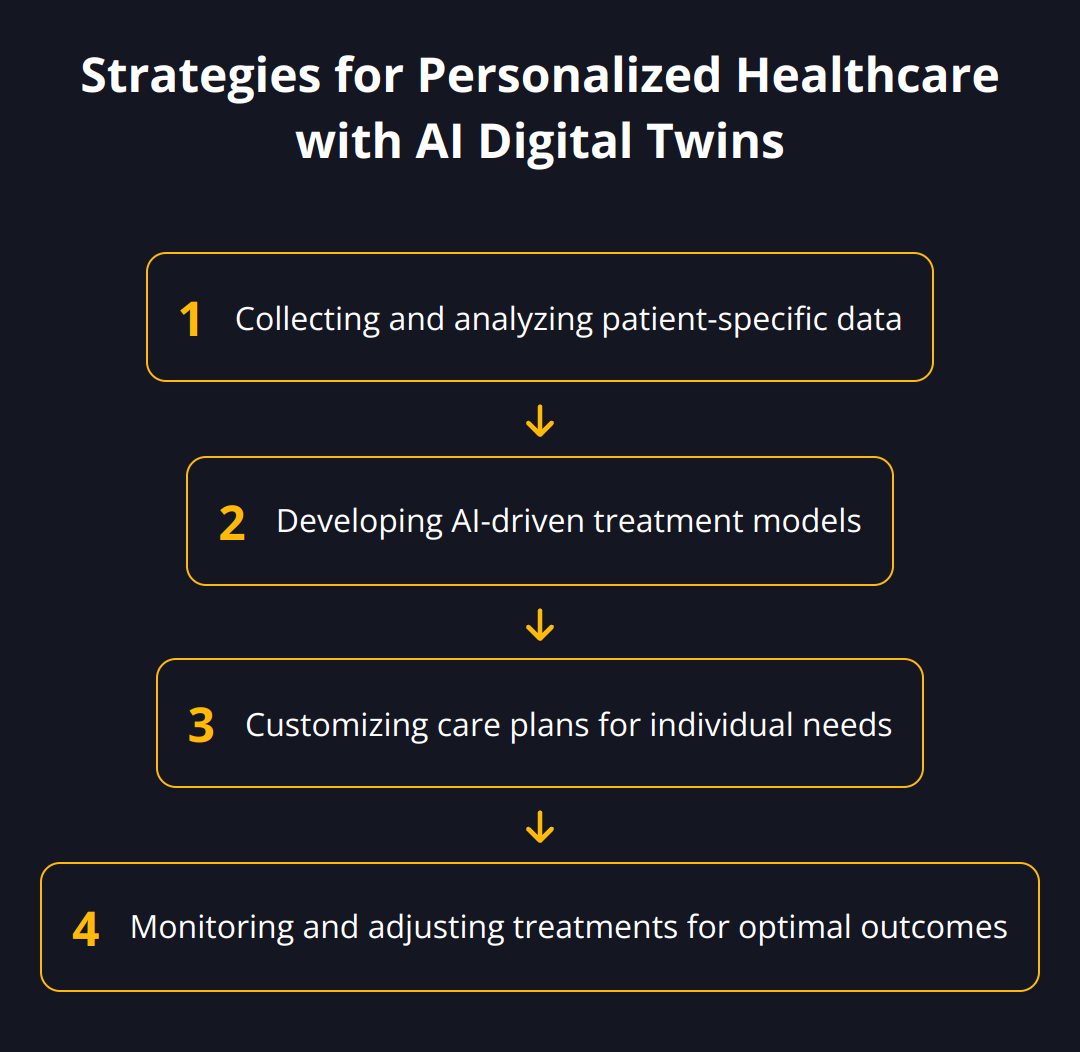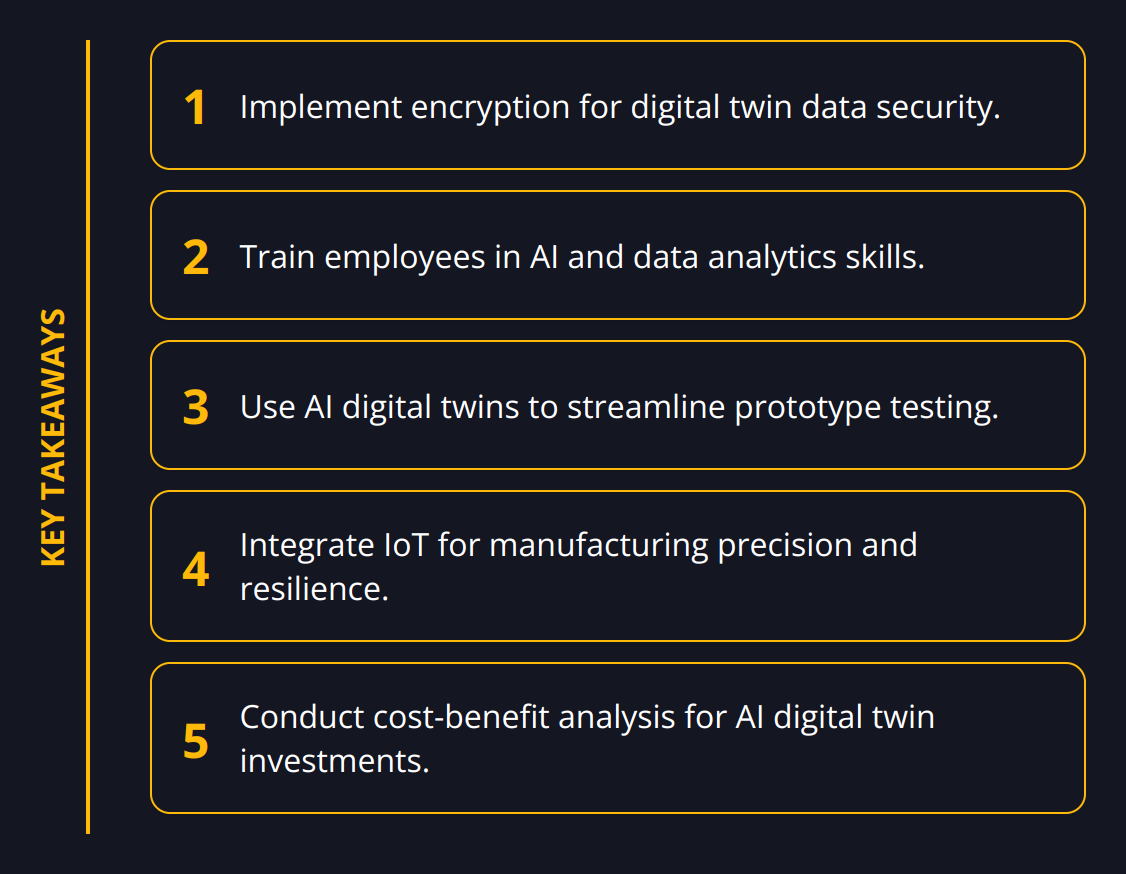We at newroom connect have been closely analyzing the innovative wave sweeping through cross-sector industries: AI-powered digital twins. These sophisticated simulations, enhanced with artificial intelligence, are more than just virtual counterparts to physical entities—they are transformative tools shaking up how businesses operate.
From elevating manufacturing processes to revolutionizing urban development and healthcare, AI-powered digital twins are a game-changer. In this post, we’ll explore their profound impact and address the challenges hindering wider adoption.
Harnessing AI in Digital Twin Technology
To truly grasp the essence of why AI-powered digital twins are taking industries by storm, one must first understand the fundamental concept behind a digital twin. It’s essentially a dynamic digital replica of a physical object, process, or system that serves as a real-time digital counterpart. When this technology is augmented with artificial intelligence, it transforms into a more autonomous, predictive, and adaptive tool.
AI brings digital twins to life, enabling them to learn from data, predict outcomes, and even simulate future states. This leap from a static digital model to a “smart” model underlines the vast difference between standard digital twins and their AI-enhanced counterparts. While traditional digital twins offer valuable insights, AI-infused twins take it further by analyzing complex data and evolving from it – paving the way for innovative optimization strategies and predictive maintenance before issues even arise.
A diverse range of sectors are harnessing AI-powered digital twins to their advantage. In manufacturing, they’re optimizing assembly lines and forecasting maintenance, resulting in reduced downtimes and increased productivity. The energy sector uses them to predict and adapt to fluctuating demands and supply. Conversely, healthcare leverages them to model complex biological systems, potentially leading to breakthroughs in personalized medicine.
Yet the most significant impacts can be observed when we look at the numbers and practical applications:
-
Predictive analysis: AI-powered digital twins have led to an impressive reduction in maintenance costs by as much as 25%, according to industry case studies.
-
Design and testing: Businesses report speeding up their prototype testing and design processes by nearly 30% using these advanced simulations.
-
Operational efficiency: Enhanced with AI, digital twins help in achieving up to a 20% increase in efficiency for various operational processes.

Let’s break down some actionables to consider when integrating AI-powered digital twins into your business strategy:
-
Evaluate your current data infrastructure to ensure it can support AI models.
-
Set clear objectives for what you want your digital twin to achieve—whether it’s predictive maintenance, process optimization, or product development.
-
Work closely with data scientists to tailor AI algorithms specific to your operations and goals.
-
Prioritize strong cybersecurity measures to protect your digital twins and the valuable data they analyze.

Always remember, AI-powered digital twins are not just a futuristic concept—they are here, driving real-world results today, transforming businesses, and setting the stage for a smarter, more efficient future. The benefits of digital twins are evident and the adoption across industries is not a trend—it’s a strategic shift.
After understanding their transformative potential, it becomes apparent that embracing AI-powered digital twins is no longer optional for competitive industries. It has become a definitive advantage.
Transforming Industries with AI Digital Twins
The introduction of AI-powered digital twins is profoundly impacting core sectors by driving innovation and efficiency to unprecedented levels. Let’s look at concrete examples where this technology is not just altering but fundamentally improving industry standards and outcomes.
Manufacturing Precision and Supply Chain Resilience
In manufacturing, AI digital twins carry the potential to fine-tune production lines and significantly boost operational resilience. Real projects have witnessed substantial enhancements in product quality, with error rates plummeting due to predictive insights provided by AI models. Digital twins, for instance, have been instrumental in automobile manufacturing where every component’s digital replica offers real-time feedback leading to an accelerated design process and more reliable products.

For supply chain management, AI digital twins act as robust risk assessment tools. They simulate scenarios such as material shortages or delivery delays, allowing companies to adjust strategies promptly. A study showed an improvement in supply chain planning accuracy by 40% when using digital twins, leading to more resilient operations.
Key actions for manufacturers include:
-
Aligning digital twin objectives with specific manufacturing targets
-
Partnering with experts to integrate IoT devices effectively
-
Continuously refining AI models to adapt to the evolving manufacturing landscape
Sustainable Urban Planning in Smart Cities
Smart cities are fertile ground for sustainable urban development, with digital twins playing a central role in modeling and managing urban infrastructures. These models offer city planners a detailed preview of future developments and their potential impact on traffic, pollution, and energy consumption. Initiatives like the virtual replica of Singapore aim to optimize traffic flow and public services, leading to an anticipated reduction in traffic congestion by 30%.
For actionable strategies in urban planning, consider:
-
Incorporating real-time data from various urban systems
-
Using digital twins to simulate long-term environmental impacts
-
Collaborating with environmental scientists to create comprehensive and sustainable urban models
Breakthroughs in Personalized Healthcare
The healthcare industry stands to gain immensely from AI-powered digital twins by offering insights into patient-specific diseases and treatment outcomes. Here, digital twins allow for personalized care plans, greatly enhancing patient treatment and recovery. By modeling individual patient responses to different treatments, healthcare providers can tailor therapies with greater precision, leading to improved patient outcomes and satisfaction by up to 50%.

Concrete steps in healthcare include:
-
Utilizing patient data to inform and improve treatment plans
-
Investing in AI-driven platforms for more accurate disease modeling
-
Ensuring patient privacy and data security are upheld to the highest standards
Each industry touched by this revolution is witnessing scalable benefits and growth opportunities, signaling that the integration of AI-powered digital twins is not just advantageous but essential for future success and sustainability.
By embracing these emerging technologies, businesses can unlock powerful predictive capabilities, refine their operations, anticipate market needs, and deliver exceptional value to their customers. The power of AI digital twins lies in the data-driven insights they provide, and the profound influence they have on decision-making, innovation, and ultimately, industry transformation.
Next, the conversation will turn towards strategies for a smooth integration of AI digital twins, ensuring organizations can capitalize on their benefits with minimal disruption.
Navigating AI Digital Twin Challenges
While AI-powered digital twins are transformative, adopting this technology is not without its hurdles. Decision-makers need to conquer pivotal challenges to harness its full potential. Understanding and addressing three major concerns—data privacy and security, the skills gap, and cost—will drive successful adoption and effective use of digital twins in any business.
Safeguarding Data Integrity and Trust
Data is the lifeblood of AI-powered digital twins, and its security is paramount. Real-time data feeds, coupled with predictive analytics, require stringent security protocols to prevent breaches that could undermine the entire system. Establishing robust cybersecurity from the ground up is essential. Here’s how businesses can bolster their data privacy and security:
-
Implement encryption protocols for data in transit and at rest.
-
Regularly update and patch systems to close vulnerabilities.
-
Conduct thorough risk assessments and develop a resilient security framework.
-
Engage in proactive monitoring for any suspicious activities.
The implementation of comprehensive cybersecurity strategies showcases a commitment to safeguarding client trust and ensures the sustained utility of digital twins.
Cultivating Talent and Overcoming Technical Hurdles

The skills gap presents another significant challenge. To develop and manage AI-powered digital twins, a workforce skilled in AI, machine learning, data analytics, and IoT is essential. Moreover, the integration of digital twins with legacy systems can be complex, often requiring bespoke solutions. Organizations can bridge the skills gap and address technical challenges in several ways:
-
Invest in training and development programs for current employees.
-
Partner with universities and institutions to build a pipeline of skilled talent.
-
Offer enticing incentives to attract top-tier talent with the requisite skills.
-
Employ scalable platforms that facilitate easier integration with existing systems.
Organizations must commit to fostering expertise and innovation to remain on the leading edge of this technological front.
Balancing Expenses with Long-Term Benefits
Cost is a pivotal factor, especially when considering the initial investment required for sophisticated AI platforms and IoT infrastructure. However, a strategic perspective is vital. The upfront costs must be measured against the potential for long-term savings and enhanced revenue streams. Businesses should:
-
Conduct a cost-benefit analysis to align with broader company objectives.
-
Explore phased approaches to budget allocation, prioritizing high-impact areas.
-
Scout for technology grants and financial incentives that may offset initial outlays.
-
Leverage data from digital twins to make more cost-effective strategic decisions.
The key is to recognize that the investment in AI-powered digital twins can lead to substantial efficiency gains, heightened innovation, and a solid competitive advantage. Clear evidence of this is seen in sectors like manufacturing, where the integration of digital twins has shown to reduce costs associated with design, production, and maintenance.
In conclusion, overcoming these barriers requires a strategic and informed approach that considers both immediate needs and future aspirations. A dedicated focus on data security, skill development, and smart financial planning will allow industries to leverage the full might of AI-powered digital twins, driving innovation and maintaining their competitive edge in a rapidly evolving technological landscape.
The next step is to ensure that the transition into an AI digital twin-enhanced operation is seamless and effective. Stay poised for actionable strategies and insights that will guide you through this process in our upcoming chapter.
Final Thoughts
The transformative potential of AI-powered digital twins in various industries marks a significant stride toward smarter and more efficient business practices. These advanced simulations exemplify the intersection of innovation and practicality, providing a canvas for creative solutions and strategic foresight. As industries face growing complexities and competition, the integration of digital twin technology with AI emerges as an essential catalyst for progress and adaptation.

Proactive adoption of this technology is key to staying ahead. The dynamic nature of digital twins, reinforced with AI, offers a compelling advantage – one that evolves with the pace of change in data, technology, and industry demands. For businesses, maintaining relevance means not just embracing AI digital twins but continually nurturing their development through education, skilled talent acquisition, and agile strategies.
We at newroom connect understand the urgency and necessity for continual innovation. Empowering businesses with the tools to create immersive virtual exhibitions and interactive e-learning environments aligns seamlessly with the ethos of AI digital twins – building dynamic, adaptable, and engaging platforms for learning, showcasing, and interacting.
Education is as much about technology as it is about empowering people. Companies must foster environments where knowledge about advancements like AI-powered digital twins is accessible and where the skills to wield such powerful tools are cultivated. This includes investing in training but also in resources that make such technologies more intuitive and user-friendly.
In conclusion, the journey doesn’t end at adoption. The symbiotic growth of AI and digital twins will continue to reshape our industries. The commitment to integrate these tools into our businesses is a testament to our adaptability and drive for excellence. We urge organizations to not just witness but fully participate in this wave of innovation.
Here are a few actionable takeaways:
-
Actively seek out and integrate AI-powered digital twin technology
-
Foster continuous learning for your teams to leverage these advancements
-
Partner with platforms that build interactive digital experiences
With newroom connect, you get more than just a platform; you engage with an evolving space designed to propel your initiatives and connect you to a global audience. Experience our software platform and bring your virtual exhibitions and showrooms to life, ensuring that your message resonates far and wide. Discover the potential of a digitally empowered future and how you can become a part of it with newroom connect.
The time for observation is over. The era of participation and proactive digital integration is here, and it has never been more accessible. Lean into the revolution, and watch your business lead the charge into a future brimming with possibility and success.


